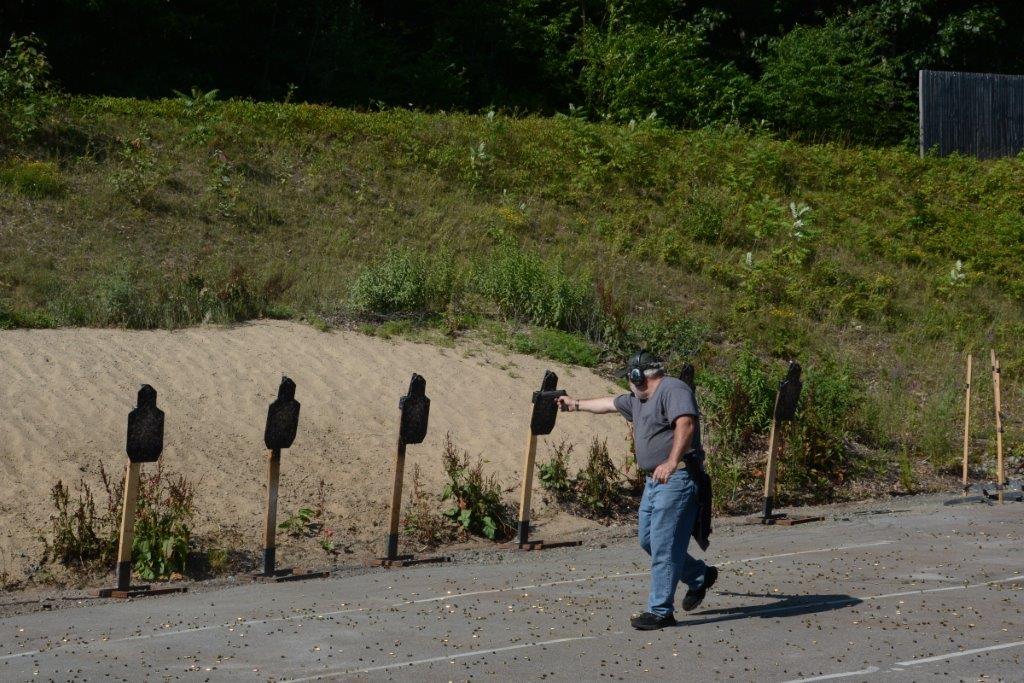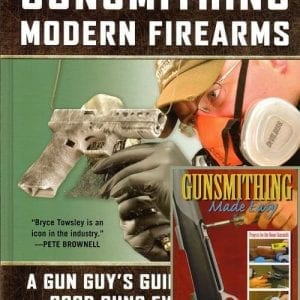I am just back from a two day Reflexive Shooting class at the Sig Sauer Academy. I fired more than a thousand pistol rounds at stationary and moving targets, in bright light, low light and no light, all without sights.
I am a happy man.
It’s no secret in shooting circles that almost nobody sees their pistol sights in a shootout. At least not in the first critical seconds, which they tell me is when most of the bad stuff happens. Most training classes tell us to concentrate on the front sight, but the statistics show that is not working. Almost without exception and regardless of the level of training, the sights are forgotten in a fight.
This class is about real life pistol training that goes beyond theory and teaches you skills that can save your life. It teaches how to point shoot. I have always believed point shooting is important, first to train the brain so you won’t resort to poor technique when your lizard cortex takes over. Second, even if we remember to look, those of us on the far side of forty may have trouble seeing sights, particularly in poor light.
The Sig Sauer Academy is a world class training facility in Epping, New Hampshire, which is less than a day’s drive for a huge part of the U.S. population. They offer a long and extensive list of training courses for military, law enforcement and civilians. Rifle, pistol or shotgun, these courses range from entry level to so advanced that only certified master level ninjas are allowed to sign up.
Reflexive Shooting was an advanced level pistol course designed for those shooters who already have shooting and gun handling skills. It was a “big boy,” real world, class where we did drills that would have an IDPA SO wetting his panties. We took it past the “square range” mentality and into the realm of real life. It was perfectly safe, but it brought some common sense into the training.
One example is how instructor Dylan Kenneson took us past the “Tactard Tango” and into some realistic scan and access drills.
Anybody who has spent any time around pistol classes has seen the “Tactard Tango” when, after shooting, the students will run their heads left and right with a synchronized unison that will have little girls in dance class green with envy. We all know that nobody is really looking. It’s just a movement that is so ingrained into the students that I have actually seen a few guys do it in competition.
The problem is that the Tactard Tango is designed for a square range, not real life. The students look left and right, but what if the threat is behind them? On the range it’s thought that they will be sweeping the other students with their loaded guns if they turn to look behind them, so most don’t teach the correct technique. Or if the shooter is flexible enough to look behind, the gun is still pointed forward and pretty useless if there is a threat. Nobody takes it seriously anymore, and they just go through the motions without really looking at anything.
They can’t turn behind them because that wouldn’t be safe. Right?
Wrong.
What’s not safe is getting so conditioned to the Tactard Tango that a bad guy behind you shoots you in the head.
Dylan taught us the safe way is to point the pistol at the ground, finger off the trigger and then to turn and scan 360 degrees. Simple, obvious and safe. But, try that on most ranges and somebody will start foaming at the mouth. Do it twice and it’s all but guaranteed that you will be banned for life. Like I said, Sig Sauer is training students to survive and they use Big Boy rules.
Then, to make sure we were not just going through the motions, Dylan threw in some observation drills without telling us. In one he held a knife in his hand while we “scanned and assessed.” Of course, none of us paid much attention to him, we knew he was there behind us and assumed he was no threat. After we all turned back to the targets he asked for a show of hands if we knew what was in his hand. All but one of us failed miserably. It was a strong lesson for me.
This training actually made sense to me. For the first time I didn’t feel like an idiot when I “scanned and accessed” at a shooting class, but instead I felt like I was learning something.

Dylan Kenneson demonstrates the safe and effective way to deal with a target behind you when seated.
Look for a few more blogs here in which I’ll explore some of this class in depth. Also, look for a feature article in NRA’s Shooting Illustrated magazine on the importance of learning reflexive shooting. If you do not currently get Shooting Illustrated, you should. It is the best magazine out there for the tactically oriented shooter.
One other point here, and pay attention Richard Mann. You are right; there is no difference in pistol cartridges. We had several shooters, including me, with 9mm handguns. But we also had a bunch with .40 S&W, at least one .45 ACP and one guy with a baby Glock converted to .357 Sig. When we did speed and accuracy drills you could not tell the difference, even when we did “Target Saturation” and put multiple shots on the target as fast as possible. In fact, the .357 Sig guy and one of the .40 shooters were amazingly fast. When it comes to shooting at steel and paper targets, there is little or no difference between defensive pistol cartridges when used by a trained shooter.
Of course the physics still apply and there is a substantial difference in terminal ballistics is you are in a fight for your life.
I still don’t care what anybody carries, but picking a 9mm because you think you will shoot better or faster than with a .40 or .45 is obviously foolish thinking. This class illustrated that very well.
The point is that just as with the “Tactard Tango,” perhaps it time for shooters to step beyond what the cool kids are doing and saying and actually explore reality.







